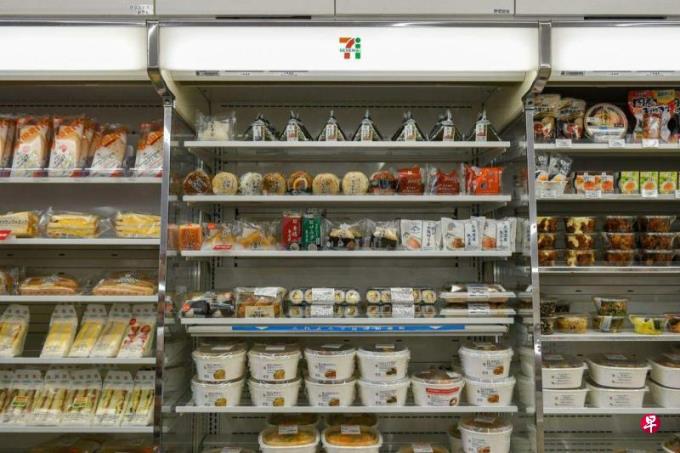
Japan physical store, the price is not the lower price, but who's service is better, emphasizing humanization and clear positioning to produce differentiated consumption experiences. Instead, there is a greater breakthrough space.
Last month, I went to work in Yokohama, Tokyo to travel in Japan.My friend asked me what the best thing to play in Japan is. The first thing I think of is to visit the convenience store.
The yen depreciates the door to Japan. Almost everyone in the friends group has been playing there in the past year.I can be said to be the descendants of friends and masses.In order to figure out, I found out that it was more than 10 years ago in Japan last time.
I went to Japan more than 10 years later, and I felt familiar and unfamiliar.
Many attractions have not changed significantly: Shibuya crossroads are still so lively, pedestrians pour in from all directions, madness and lively intertwined; Akihabara is still so two -dimensional, and there are animations and comics on the streets., Video game and hand -made stores are overwhelming.The passengers of Asakusa Temple are bustling, but from the temple along the Sumida River to the Tokyo Qingkong Tower, they can still find a tranquility and leisure.
However, in this era of changes, this sense of familiarity often makes me a strange sense, as if the like time is going back and returning to the past.Especially the experience of shopping consumption.
When the e -commerce platform is popular, the so -called shopping is a digital photo on the screen of the mobile phone.I walked in these old -fashioned shopping malls or large electrical appliances in Japan, but I seemed to find shopping fun again.
Like I strolled around Ginza Avenue, there are old -fashioned department stores on the Ginza Avenue. The decoration is full of historical sense, and it is like wearing years.There are many types of products, from expensive brand -brands to Japanese manufacturing, to various exquisite desserts, especially food malls on the first floor of the ground floor, it is like a huge supermarket with various foods.
When you go to the famous electrical shops such as Akihabara BIC Camera or YodoBashi, there are all the items in it. There are both the latest mobile phones and video game consoles, as well as electronic products that are rarely used now.In some second -hand stores, many medium -aged computer assembly parts and products can be found.

The physical store is not knocked down by e -commerce
Even convenience stores in Japan are also better than local shopping malls.
Although there are convenience stores in Singapore, Japan's convenience merchants are full of products, and there are many brand or cooperative brands, such as 7-Eleven have many their own brand retail, family convenience stores (FAMILYMART) and MUJI launch various typesStationery grocery.Other media reporters who interviewed abroad liked to go to various convenience stores in the evening to see which specialty products they have and which store's snacks are the best.
In the past few years, the global e -commerce platform has developed rapidly, causing many physical stores to encounter "closing tide".As a country with a high level of mobile phones and a high level of cash -free transactions, large e -commerce companies such as Rakuten, Yahoo Japan Shopping and Amazon Japan are theoretically responding to local physical stores.But this is not the case. Many Japanese physical stores are like "Xiaoqiang who can't die" standing, but it is better and bigger.
According to a survey by German research company Statista in 2022, the proportion of daily necessities on the Internet to buy daily necessities online is 40 % lower than the average level, ranking the lowest among 39 countries.
In addition, surveys from Statista and the Ministry of Economic and Industry found that e -commerce accounts for about 8 % to 9 % of the sales of goods, showing that online shopping only accounts for a small part of personal consumption.In contrast, Singapore's online sales account for about 13 % to 15 %, while China is more than 27 %.
Why can't Japanese physical stores be knocked down by e -commerce, but physical stores in Singapore and many places can't?
When I mentioned this problem with local people, she laughed and said, "The physical store shopping experience is much much better than online shopping. I have to wait for a few days such as I bought things online for a few days.When the convenience store has taken a trip, I will buy things. In terms of price and type, there are many types of physical stores, and the price is similar to online shopping.
The service industry can be seen everywhere
Indeed, the service industry is all details, and the people -oriented spirit can be seen everywhere in Japan.When dining at the ramen shop, although the waiter is very busy in the restaurant, he will still pay attention to the long dragon arranged outside the ramen shop. From time to time, he will go outside to maintain order and apologize to customers who have been waiting for a long time.
Buying an umbrella on the convenience store on a rainy day. The clerk has already placed the umbrella in a conspicuous position. When buying an umbrella, you will also remind you: "Today the weather forecast is raining all day, and you must be careful when walking."
There is no difference in the same clothes in department stores and online stores. However, when buying clothes in Japanese department stores, the clerk always gives services in time to allow people to enjoy more additional services.This sounds like a small detail, but these details are warm.
Many Japanese stores are also full of craftsmanship, giving people a deep impression of focus.Some sushi restaurants have been in operation for decades, and there are many customers, but they still maintain a small shop operation. The boss does not have the idea of opening a branch or franchise store.In their eyes, sushi shops do not distinguish between big business and small business. They are proud of inheritance and excellence, and they get satisfaction in continuous focus.
Feng Shui turns, many e -commerce companies seem to have begun to have trouble recently, market demand is almost saturated, platform traffic growth has fallen into a bottleneck, but competition has become fierce.
The reason is that this is because e -commerce operations are mainly "spelling costs and spelling prices". Consumers are not only compared the price of different platforms, but also compare between different merchants in the same platform.As a result, the profits of many e -commerce are thinner and thinner, but the cost of customer acquisition is getting higher and higher.
The more you care about the results, the easier it is to lose the result.The development model of e -commerce "small profits and more, no quality only finds the quantity", and now it seems to have reached the extreme.On the other hand, the Japanese physical store is not the lower price, but whose service is better. It emphasizes humanization and clear positioning to produce differentiated consumption experiences, but there is a greater breakthrough space.
The local retail industry has gradually recovered due to the return of tourists. Many analysis believes that the prospects of physical stores are still at stake, and they continue to face the strong challenges of e -commerce.In fact, e -commerce and physical stores have never been hostile. In the future, there may not be even e -commerce and entities in the retail industry, because all product sales will be "online+offline" omni -channel marketing.Can't keep up with the times.
If physical store owners do not understand the fun of consumption, they do not know that creating a unique consumption experience is sometimes more important than the price, and the thinking is stagnant at the stage of "who is cheaper than whom".The platform was defeated.For me, JapanLidian will continue to visit better than large shopping malls.




